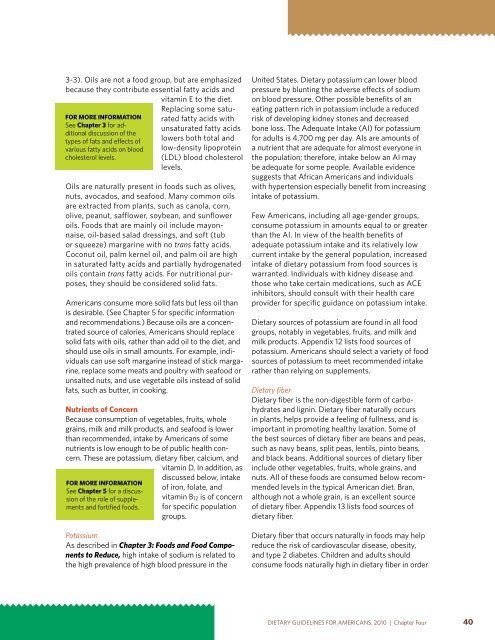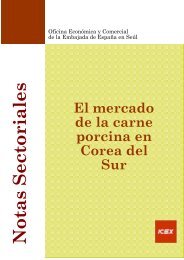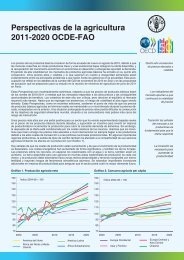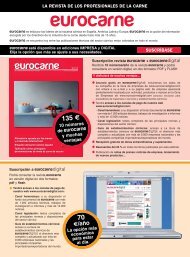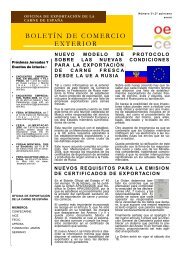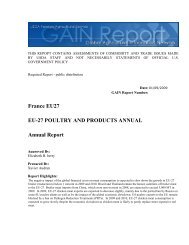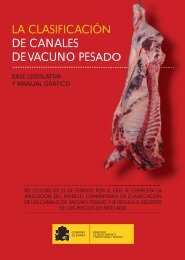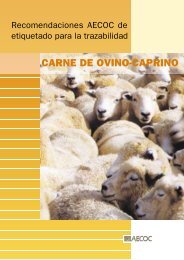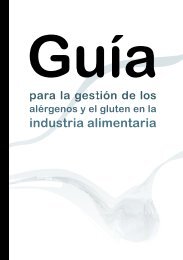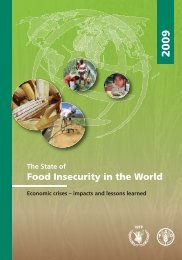Dietary Guidelines for Americans - SchoolNutritionAndFitness.com
Dietary Guidelines for Americans - SchoolNutritionAndFitness.com
Dietary Guidelines for Americans - SchoolNutritionAndFitness.com
- No tags were found...
You also want an ePaper? Increase the reach of your titles
YUMPU automatically turns print PDFs into web optimized ePapers that Google loves.
3-3). Oils are not a food group, but are emphasizedbecause they contribute essential fatty acids andvitamin E to the diet.<strong>for</strong> More in<strong>for</strong>MationSee chapter 3 <strong>for</strong> additionaldiscussion of thetypes of fats and effects ofvarious fatty acids on bloodcholesterol levels.Replacing some saturatedfatty acids withunsaturated fatty acidslowers both total andlow-density lipoprotein(LDL) blood cholesterollevels.Oils are naturally present in foods such as olives,nuts, avocados, and seafood. Many <strong>com</strong>mon oilsare extracted from plants, such as canola, corn,olive, peanut, safflower, soybean, and sunfloweroils. Foods that are mainly oil include mayonnaise,oil-based salad dressings, and soft (tubor squeeze) margarine with no trans fatty acids.Coconut oil, palm kernel oil, and palm oil are highin saturated fatty acids and partially hydrogenatedoils contain trans fatty acids. For nutritional purposes,they should be considered solid fats.<strong>Americans</strong> consume more solid fats but less oil thanis desirable. (See Chapter 5 <strong>for</strong> specific in<strong>for</strong>mationand re<strong>com</strong>mendations.) Because oils are a concentratedsource of calories, <strong>Americans</strong> should replacesolid fats with oils, rather than add oil to the diet, andshould use oils in small amounts. For example, individualscan use soft margarine instead of stick margarine,replace some meats and poultry with seafood orunsalted nuts, and use vegetable oils instead of solidfats, such as butter, in cooking.nutrients of concernBecause consumption of vegetables, fruits, wholegrains, milk and milk products, and seafood is lowerthan re<strong>com</strong>mended, intake by <strong>Americans</strong> of somenutrients is low enough to be of public health concern.These are potassium, dietary fiber, calcium, andvitamin D. In addition, as<strong>for</strong> More in<strong>for</strong>MationSee chapter 5 <strong>for</strong> a discussionof the role of supplementsand <strong>for</strong>tified foods.discussed below, intakeof iron, folate, andvitamin B 12 is of concern<strong>for</strong> specific populationgroups.PotassiumAs described in chapter 3: foods and food <strong>com</strong>ponentsto reduce, high intake of sodium is related tothe high prevalence of high blood pressure in theUnited States. <strong>Dietary</strong> potassium can lower bloodpressure by blunting the adverse effects of sodiumon blood pressure. Other possible benefits of aneating pattern rich in potassium include a reducedrisk of developing kidney stones and decreasedbone loss. The Adequate Intake (AI) <strong>for</strong> potassium<strong>for</strong> adults is 4,700 mg per day. AIs are amounts ofa nutrient that are adequate <strong>for</strong> almost everyone inthe population; there<strong>for</strong>e, intake below an AI maybe adequate <strong>for</strong> some people. Available evidencesuggests that African <strong>Americans</strong> and individualswith hypertension especially benefit from increasingintake of potassium.Few <strong>Americans</strong>, including all age-gender groups,consume potassium in amounts equal to or greaterthan the AI. In view of the health benefits ofadequate potassium intake and its relatively lowcurrent intake by the general population, increasedintake of dietary potassium from food sources iswarranted. Individuals with kidney disease andthose who take certain medications, such as ACEinhibitors, should consult with their health careprovider <strong>for</strong> specific guidance on potassium intake.<strong>Dietary</strong> sources of potassium are found in all foodgroups, notably in vegetables, fruits, and milk andmilk products. Appendix 12 lists food sources ofpotassium. <strong>Americans</strong> should select a variety of foodsources of potassium to meet re<strong>com</strong>mended intakerather than relying on supplements.<strong>Dietary</strong> fiber<strong>Dietary</strong> fiber is the non-digestible <strong>for</strong>m of carbohydratesand lignin. <strong>Dietary</strong> fiber naturally occursin plants, helps provide a feeling of fullness, and isimportant in promoting healthy laxation. Some ofthe best sources of dietary fiber are beans and peas,such as navy beans, split peas, lentils, pinto beans,and black beans. Additional sources of dietary fiberinclude other vegetables, fruits, whole grains, andnuts. All of these foods are consumed below re<strong>com</strong>mendedlevels in the typical American diet. Bran,although not a whole grain, is an excellent sourceof dietary fiber. Appendix 13 lists food sources ofdietary fiber.<strong>Dietary</strong> fiber that occurs naturally in foods may helpreduce the risk of cardiovascular disease, obesity,and type 2 diabetes. Children and adults shouldconsume foods naturally high in dietary fiber in orderDIETARY GUIDELINES FOR AMERICANS, 2010 | Chapter Four 40


